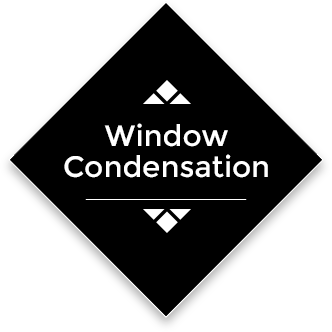Condensation on the Inside
It’s a different story if there’s condensation on the inside of your home, particularly if it’s on your windows.
Condensation is simply what happens when the warm, moist air inside your home contacts your cold windows. The moist air cools upon contact and changes into moisture, or even frost or ice, on your windows. In older, poorly insulated homes, moisture can even develop on walls. But it usually settles on your windows because they’re the coolest part of a room.
Condensation problems are typically much worse with older windows. Glass units over 10 years old were not built as well as they are today. Older sealed glass systems have very poor insulating value. As a result, the inside surface of the windows is much colder, causing worse condensation problems. Old windows need a lot of warm airflow to help warm them. This is why hot air registers are usually found under windows.
Condensation may not be a major problem if it only happens once in a while, like during a real cold spell. But if you’re faced with moisture on an ongoing basis, it’s definitely something to be concerned about.
 Condensation on My Windows: What’s the Cause?
Condensation on My Windows: What’s the Cause? Window Condensation
Window Condensation